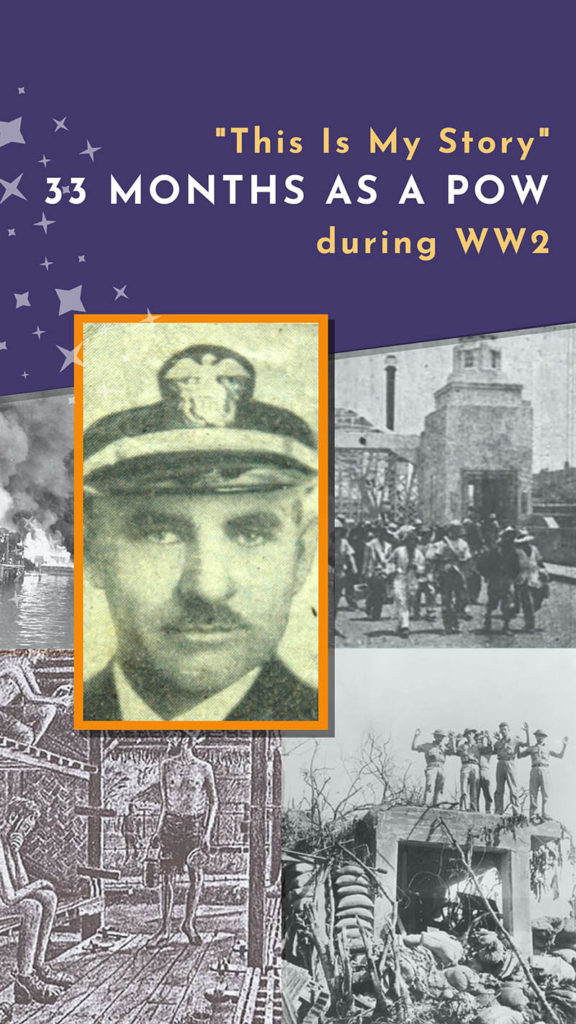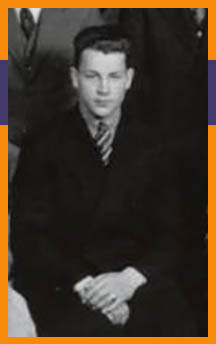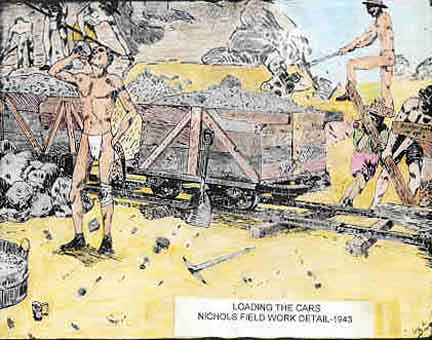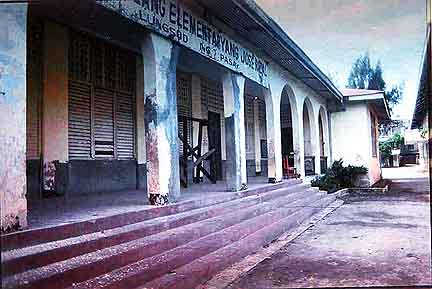Written by Alma Salm. Manuscript pages 1-3. Graphic content.

This is my story of events endured by my compatriots and myself during our thirty-three months as military prisoners of war under the Japanese flag in the Philippines.
It is not a pretty story and I profoundly wish it had a happier ending.
Out of seven thousand officers and men in our Camp No. One at Cabanatuan only the last remnants, five hundred and eleven of us, were liberated January 31, 1945, by Lieutenant Colonel Mucci’s Sixth American Rangers and Filipino Guerrillas.
No one will ever realize more than we ex-prisoners who had lost all vestige of freedom under a despotic government—those things we so took for granted heretofore—our priceless American heritage of LIBERTY, EQUALITY and DEMOCRACY. It is worth every dollar expended and every ounce of effort from the day of one’s birth until the day of death to sustain it.
The American flag, upon sighting it once again after all those months of hell, made us shed tears spontaneous and unashamed because of what it represents.
During our eternity in bondage, our status was reduced to that of the lowest Oriental coolie, and our lives were sheep indeed.
The Japanese Military, as we American prisoners learned to know them unmasked, are sadists capable of cruel and inhuman practices which have no place in our western standards. (See Commentary)

Take the case of Norman Hinckley. I first saw him at the dreaded “Reprisal Camp,” Nichols Field, near Manila.
It seems the grim reaper had been dogging his footsteps from the first; but Hinckley always managed to be one step ahead. He took every epidemic that struck camp and somehow survived. It was true after each sickness he was a little more emaciated but as he sort of apologized once with a grin, “My damn sense of curiosity—just wondering what is going to happen next—somehow keeps me ticking.”
I wondered about that a great deal—it wasn’t possible he could win that race—and I said a silent prayer for him. I felt more like swearing but I didn’t dare—for Hinckley’s sake. His superb determination not to die—his way of hurdling and conquering so many obstacles—somehow tugged extra hard at the heart strings.
Tall he was and spare, with wasted body and ulcerous arms and legs. Enduring malignant malaria and dysentery, he had labored among the pits [at Nichols Field] day in and day out until he was no longer physically able to be a companion to a pick and shovel.

More images of Nichols Field.
The American doctor in camp had grouped Hinckley with our sick; but the “Wolf,” our fiendish Jap slave driver, would obstinately wave the ill man out each morning to the labor battalion where his detail now consisted of boiling our drinking water and brewing tea for the Japanese guards.
Hinckley was “a secondtimer” here at Nicholas—the result of a ghastly trick of fate. As I watched him during these last months I saw that fine spirit of his was noticeably wearing thin and his courageous philosophy was no longer of any help.
He had endured this inhuman hell-hole tenaciously willing himself to live for almost a year begore being ordered by the doctor back to [Cabanatuan Camp] Number One prison 80 kilometers away on the hot, treeless plain. After a few weeks respite at Cabanatuan, volunteers were called up for another out-of-camp detail. Hinckley, poor devil, was hungry. Hoping there was more opportunity to forage for food on some of these distant details, he volunteered.
It was not until his arrival at Manila the prisoner learned their destination—Nicholas Field. And when those corrugated iron prison walls again loomed before Hinckley—that did it! Overnight his face took on the ghostly paleness of a man who was long overdue to distant parts.

Each day saw Hinckley’s gaunt figure at his task, a little more somber and detached. Then one evening he was not among the marching slaves as they returned from the pits. The following morning as the prisoners assembled in the quadrangle, Hinckley’s exhausted and abused form greeted us from the sala above. He had been apprehended out of bounds on the airfield and after the usual beatings by the Japs was lashed to one of the pillars.
In this condition he remained under sentence of death. That evening upon our return he was still there. He had been given no water nor rice since the previous day and his active dysentery had caused numerous defications which ran down his legs and added to his misery. It was a ghastly sight, Oh God!
Sometime during the night, guided by a candle of stars overhead Hinckley’s soul quietly left us—another victim of Jap brutality.
Here’s what to read next:
- The upsetting truth about PFC Norman Hicks Hinckley’s death.
- Discover the “inhuman hell hole” Nichols Field, a dreaded work camp near Manila.
- Experience the fall Corregidor island from Alma Salm’s first-hand account, “Last Days of Corregidor“
Know anyone who would appreciate this post?
The greatest way to honor these servicemen is to share their story with the world and keep their sacrifices alive in our memories. And you’re a vital part of that. If you know anyone who would be appreciate this memoir, please consider sending them the link to this page or sharing this link on social media.
Sources
- Image 1: Drawing courtesy Al McGrew, H Company, 60th CAC, who was captured on Corregidor, found on Center for Research: Allied POWs under the Japanese, Roger Mansell, Palo Alto, California, http://www.mansell.com/pow_resources/camplists/philippines/nichols_pasay/nichols_plot.html, accessed 2 February 2019.
- Image 2: Courtesy Al McGrew, found at “Pasay Camp (Nichols Field),”
Center for Research: Allied POWs under the Japanese, Roger Mansell, Palo Alto, California, http://www.mansell.com/pow_resources/camplists/philippines/nichols_pasay/pasay_school_plot.html, accessed 2 February 2019.
![“This Is My Story”: 33 Months as POW during WW2 [Memoir #1]](https://www.anastasiaharman.com/wp-content/uploads/2019/01/Salm-Alma-Photograph-2.jpg)
